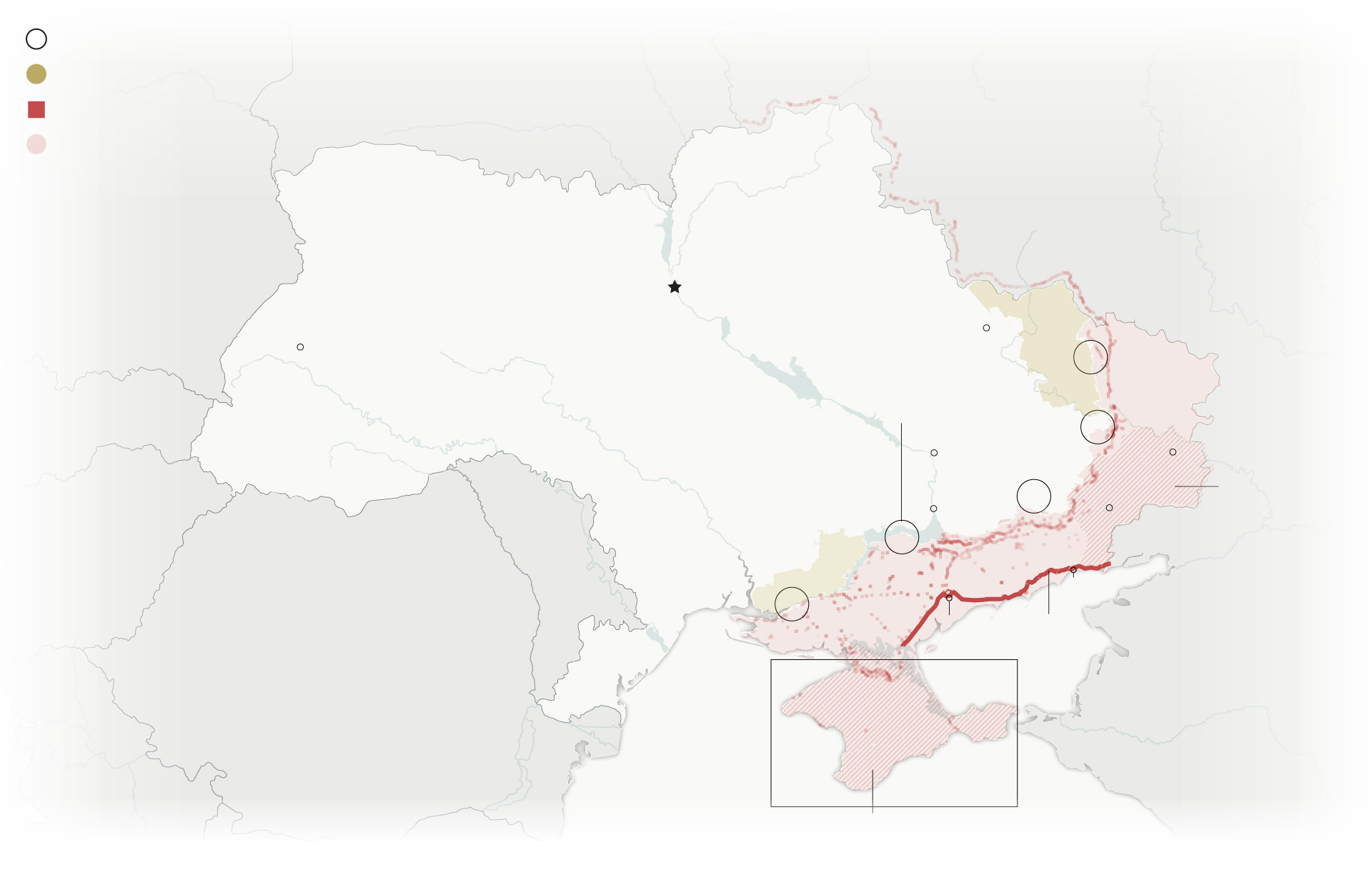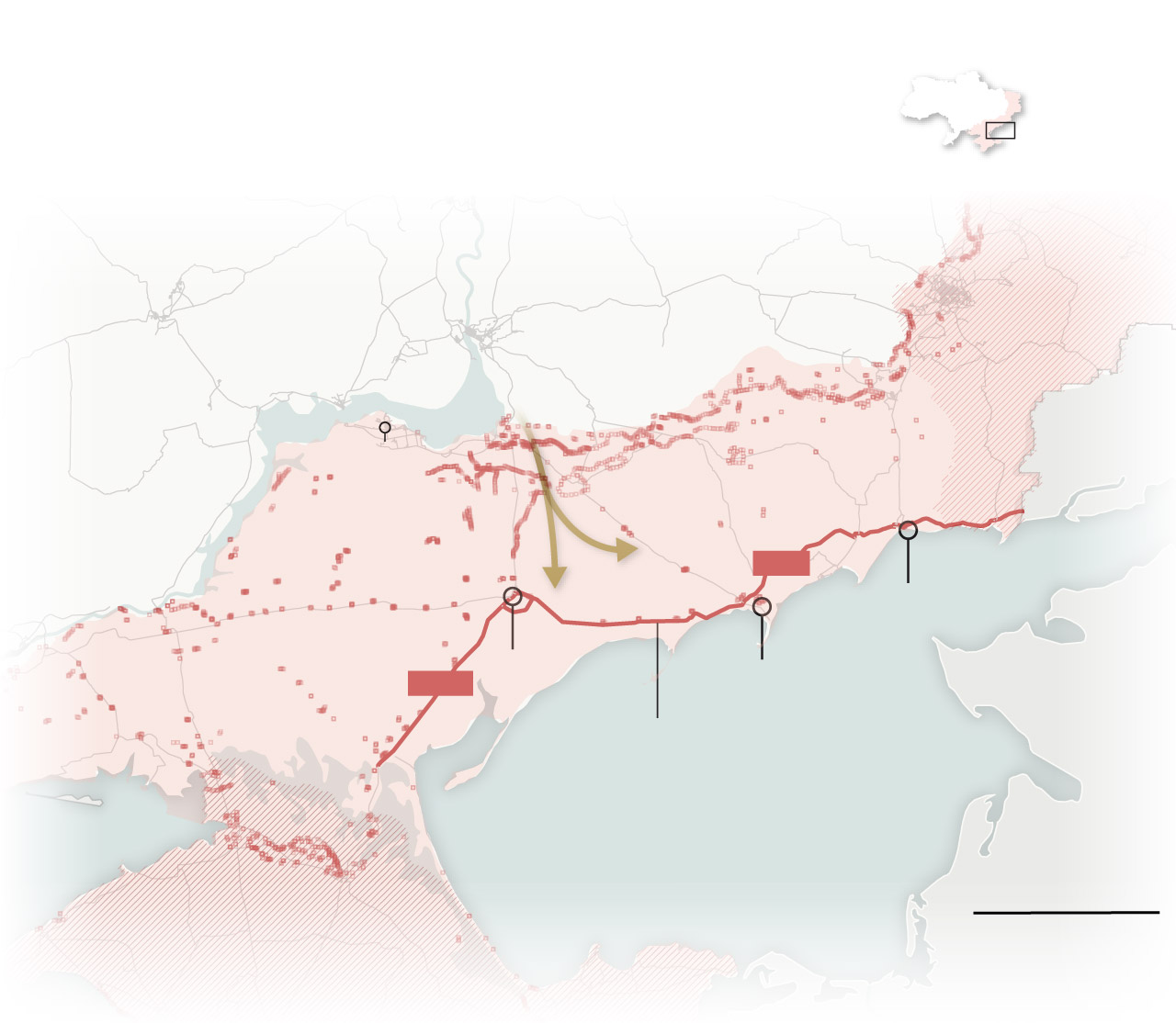Ukraine Counter Offensive on Its Way and What is at Play
 |
Where is the counteroffensive unfolding?
Intense fighting has been reported in the Zaporizhzhia region, in Ukraine’s southeast. It is heavily fortified, mined by Ukraine and defended by deeply entrenched Russian forces.

As Ukraine's counteroffensive begins,
reports indicate heavy fighting in the Zaporizhzhia region,
a part of the front line that has long been
seen as the likely location of a counterattack.
Donetsk
Zaporizhzhia
Area held by
Russia-backed
separatists
since 2014
UKRAINE
Enerhodar
M14
Mariupol
Kherson
Melitopol
Berdyansk
RUSSIA
E105
Russia controls this
road that creates a
land bridge
to Crimea.
50 MILES
Sea of Azov
CRIMEA
Illegally
annexed by
Russia in 2014
The flat fields of Zaporizhzhia were long seen as a likely and advantageous area for the counterattack to begin. By cutting through here, Kyiv could sever the “land bridge” between mainland Russia and Crimea. This would cut off Russia’s east-west supply lines.
Ukrainian forces could attempt, under that scenario, to retake the city of Melitopol, the region’s Russian-occupied capital. They could also seize Enerhodar, where the Zaporizhzhia nuclear power plant, Europe’s largest, is located. Fighting around the plant has raised international alarm throughout much of the conflict.
What has Ukraine said about the offensive?
Ukrainian officials had said they would not make an official announcement once the counteroffensive begins. But four members of the armed forces confirmed to The Washington Post that a significant attack had been launched.
While Kyiv has tried to temper expectations in recent weeks, Ukrainian officials have long said that they want to retake all the territory Russia has seized since last year’s invasion.
The push comes after months of Western efforts to equip Ukrainian forces with increasingly sophisticated weaponry — including air defense systems, tanks, long-range rockets and drones — and as the Ukrainian military trains to use it, now and in the months ahead.
“I believe that the more victories we have on the battlefield, frankly, the more people will believe in us, which means we will get more help,” Ukrainian President Volodymyr Zelensky said in an interview with The Post in May.
Later that month, he told the BBC he was delaying the counteroffensive because the Ukrainian army did not have enough weapons. While the declaration was an apparent plea for a continued supply of arms, analysts also said it could be a ploy to catch Russia by surprise.
Ukrainian officials have said that Kyiv’s long-term objective would be to retake Crimea, which was illegally annexed by Russia in 2014, along with territory in the east seized by Russian-backed separatists, although analysts say conditions on the ground would have to change substantially for that to be achievable. In private meetings earlier this year, Zelensky floated the idea of moving into Russian territory to gain negotiating leverage, according to leaked classified U.S. intelligence documents — a possibility Zelensky has since disavowed.
A web of trenches shows Russia fears losing Crimea
What advantages does each side have?
Return to menu
While Russia has gained little territory since the fall, it has had time to fortify. For hundreds of miles, razor wire, trenches and weapons systems guard the front line, comprising “the most extensive defensive system that we’ve seen in Europe since World War II,” said Seth G. Jones, director of the International Security Program at the Center for Strategic and International Studies, a Washington think tank.
“Which, obviously, the Germans penetrated,” he added.
Territorial gains remain possible. The sheer length of the front line means Russian troops are stretched thin. Without knowing where Kyiv will penetrate, Moscow’s army could prove unable to protect itself at certain points of entry.
“Historically, there are always openings in lines. It just is a matter of trying to exploit those weak points and push those forces in,” Jones said. And while morale among Ukrainian fighters remains entrenched in a will to protect their nation’s future, Russian soldiers and mercenaries are less determined, he said.
The fight to retain the city of Bakhmut, which has become a symbolic battleground for both sides, along with the need to reinforce the Russian border after recent incursions by anti-Moscow groups, could keep Russian forces stretched.
What does the counteroffensive mean for the future of the war?
Return to menu
Analysts echoed Zelensky’s assertions that victories would bring more help from allies. Gains in the counterattack could be an antidote for waning political support for the war in some Western countries, which have collectively donated billions of dollars’ worth of weapons to Ukraine’s cause.
“We like winners,” Jones said. “And so I think part of what is at stake for Ukrainians is showing that they can continue to retake territory and to gain momentum. That, I think, will be helpful on the diplomatic, economic and the broader political end too.”
Substantial losses could also spell trouble for Russia. Conscription efforts have already led to protests throughout the country. Even if Ukraine doesn’t make great territorial gains, Russian casualties could lead to another round of mobilization, which could further sour Russian attitudes toward the war.
Samantha Schmidt contributed to this report.
Sources: The Institute for the Study of War and the American Enterprise Institute’s Critical Threats Project; OpenStreetMap. Brady Africk, who analyzed satellite imagery from Copernicus Open Access Hub, provided fortifications data, which does not include all fortifications in Ukraine; some defenses predate Russia’s full-scale invasion. Washington Post

Comments